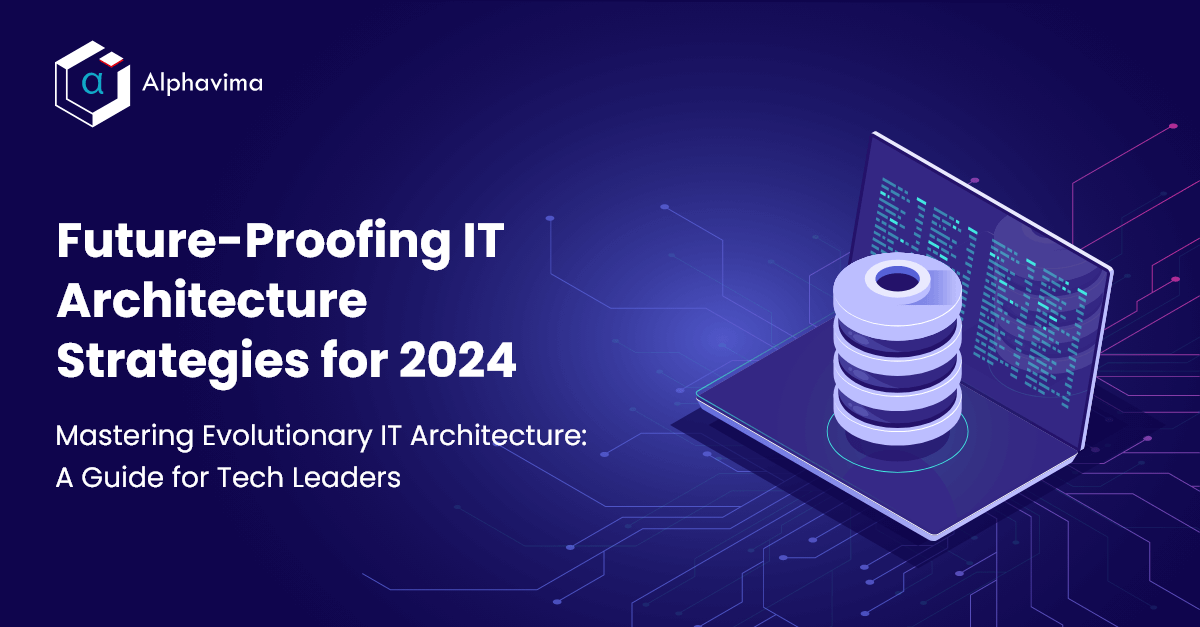Blog
Future-Proofing IT Architecture Strategies for 2024
20 Dec 2023

In today's fast-changing tech world, being proactive with IT architecture is crucial. In 2024, being agile, scalable, and adaptable in IT isn't just important—it's necessary for long-term success. In this blog, we will explore some key strategies for IT architecture, helping IT leaders navigate the upcoming complex technology changes. Implementing these strategies enables businesses to stay ahead in the rapidly changing tech world with confidence.
Understanding the Shift in IT Architecture
1. Embracing Modularization for Scalability
- The future of IT architecture pivots on modularity, enabling easy scalability. Breaking down systems into manageable modules enhances flexibility.
- According to research, 80% of new enterprise applications will be deployed in containers by 2024. (Source: Gartner)
2. Cloud-Native: Utilizing the Power of Cloud Infrastructure
- Cloud-native architecture encourages agility and efficiency, allowing seamless integration and rapid deployment of applications.
- IDC forecasts that over half of all enterprise IT spending will be cloud-based by 2024.
3. AI Integration for Intelligent Systems
- Integrating AI into IT architecture empowers systems to learn, adapt, and predict, optimizing operations and decision-making.
- The global AI market is projected to reach $191 billion, transforming IT architecture frameworks by 2024.
Key Strategies for Evolutionary IT Architecture
1. Agile Development Methodologies
- Embrace Agile and DevOps methodologies to ensure continuous integration and delivery, facilitating quicker responses to market demands.
- Companies utilizing Agile methodologies are 2.5 times more likely to report better project visibility (PMI).
2. Data-Centric Approaches
- Prioritize data-centric architecture to harness the power of data assets, enabling informed decision-making and predictive analytics.
- It is estimated that 30% of digital businesses will mandate DNA storage for their information assets by 2024. (Source: Gartner)
3. Security-First Mindset
- Embed security at every layer of architecture to mitigate cyber threats. Zero-trust models and AI-driven security systems are essential.
- Cybercrime is projected to cost the world $10.5 trillion annually by 2025 (Source: Cybersecurity Ventures).

Implementing Future-Ready IT Architecture
1. Legacy Modernization
- Strategically modernize legacy systems to align with evolving technology landscapes, ensuring compatibility and efficiency.
- 70% of organizations will have accelerated their use of digital technologies, transforming legacy business processes by 2024. (Source: IDC)
2. Edge Computing Integration
- Adopt edge computing to reduce lagging, enhance performance, and support real-time data processing, crucial for IoT and AI-driven applications.
- Over 50% of enterprise-generated data will be created and processed outside centralized data centres by 2024. (Source: Gartner)
3. Continuous Learning and Adaptation
- Promote a culture of continuous learning and adaptability within IT teams to swiftly embrace emerging technologies and methodologies.
- Around 94% of employees would stay longer in a company that invests in their career development. (Source: LinkedIn)
Conclusion
As we move forward into 2024 and beyond, IT architecture needs to evolve. It is not solely about new technology; it involves using that technology strategically to innovate, optimize operations, enhance efficiency, and maintain a competitive edge in the market. Leaders need to lead the way in adopting these strategies to guide their organizations toward success in a constantly changing tech world. This means understanding how to leverage new technologies effectively and integrating them strategically into their operations to gain a competitive edge.
